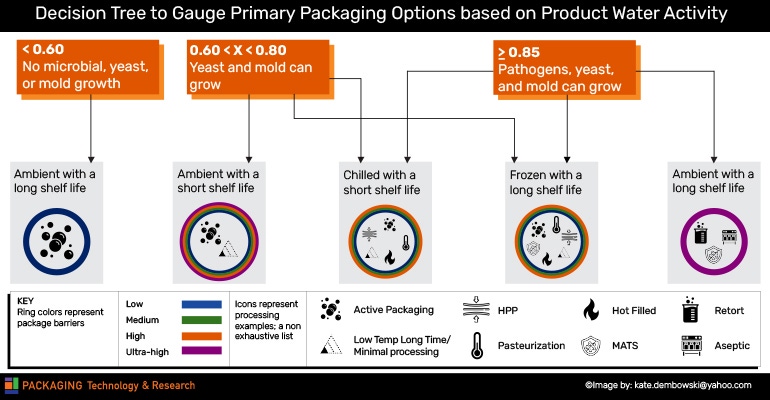How to Retain Your Retiree's Packaging Expertise
Formalized models can capture food science, processing, and packaging experiential knowledge and science from retiring subject matter experts.

Ah, modeling is “cool” for the geek in all of us…and their use is growing.
The food packaging industry has used models to guide packaging professionals' decisions on what barrier or level of protection is needed and the implications of increased shelf life, faster machinery, regulations, and other situations over the years. Now we are formalizing these models to capture food science, processing, and packaging experiential knowledge and science.
One of the reasons that models are increasingly critical is that the food packaging industry is losing the experiential knowledge of retirees at a rapid rate. For example, the specific oxygen scavenger knowledge on various projects gained by John Solomon, a recent Clariant retiree, cannot be replaced. Capturing Solomon’s knowledge in models allows for mistakes to be avoided, fast and accurate decision-making, and more time to focus efforts on true innovation.
The alternative? Messaging Solomon every time there is a question. While he does respond, a model would provide more far-reaching knowledge and allow him and other subject matter experts time to enjoy retirement.
Also, not using models to guide decisions can increase food safety risk, decrease profits and alter global dynamics, consumer time, and energy that could otherwise be spent on innovation.

The two most popular models.
Expert System Decision Trees and formal Bayesian models are gaining increased recognition in the food packaging industry to retain knowledge and advance innovation in an increasingly complex food packaging value chain. They differ in that Expert System Decision Trees guides present decisions, and Bayesian models allow the future impact of different decisions to be determined.
Expert System Decision Trees guide the present
Expert System Decision Trees include models as simple as graphical decision trees to represent the decision points and actions, like the one pictured at the top or they can also be more involved computer programs. This graphical decision tree defines the information needed to define safe storage temperatures, packaging, and processing solutions based on the water activity of a food. Knowledge of food science, engineering, safety, and packaging was needed to develop this graphical decision tree. Other Expert System Decision Trees were developed recently by an R&D packaging team to explain to their internal project team why compostable film was not viable for a specific produce package.
Bayesian models predict the future
Where Expert System Decision Trees guide decision-making, Bayesian models allow us to look forward to seeing the impact of choices we may make through conditional dependencies. This helps us see what impact of decisions will have in our increasingly complex world. Bayesian models show unintended consequences, opportunities, and how costs are balanced in the value chain. These models are not new.
Also, Bayesian models are used to determine the impact of encountering Extraterrestrial life and of planetary explorations.
Back on Earth and specifically in our packaging world, Bayesian models assess the impact of alternative materials, machinery, active packaging science, and intelligent packaging choices and, on a personal note, for those considering changing jobs.
For example, in a case study of converting to metallized film from oriented polypropylene (OPP), Bayesian modeling shows other implications and opportunities beyond just an increased shelf life and the risk of trapping oxidation by-products that cause off flavors. In this biaxially-oriented PP-to-metalized conversion scenario (that will be presented at the Shelf Life International Meeting in Bogota this month) we mapped over 75 implications ranging from production, innovation, quality assurance, and agility, where costs are balanced in the value chain. The big highlight so far in this conversion is the reduction in packaging innovation and the need to align production with harvesting high-priced ingredients.
With countless decisions to make, it’s fortunate there are “cool” models available to guide us.
Claire Sand has 30+ years of experience in industry and academia. She’s owner of Packaging Technology and Research and Gazelle Mobile Packaging and an Adjunct Professor, CalPoly, Michigan State University, and the University of Minnesota. You can reach her at www.packagingtechnologyandresearch.com or [email protected].
Ziynet Boz, PhD, is Assistant Professor, Sustainable Food Systems Engineering, at the University of Florida (UF). She earned her PhD as a Fulbright Scholar at UF specializing in food packaging and earned BS and MS degrees in Food Engineering from Mersin University. She is currently teaching engineering design, Lifecycle Assessment, and Unit Operations courses. Contact: [email protected], LinkedIn
About the Author(s)
You May Also Like






